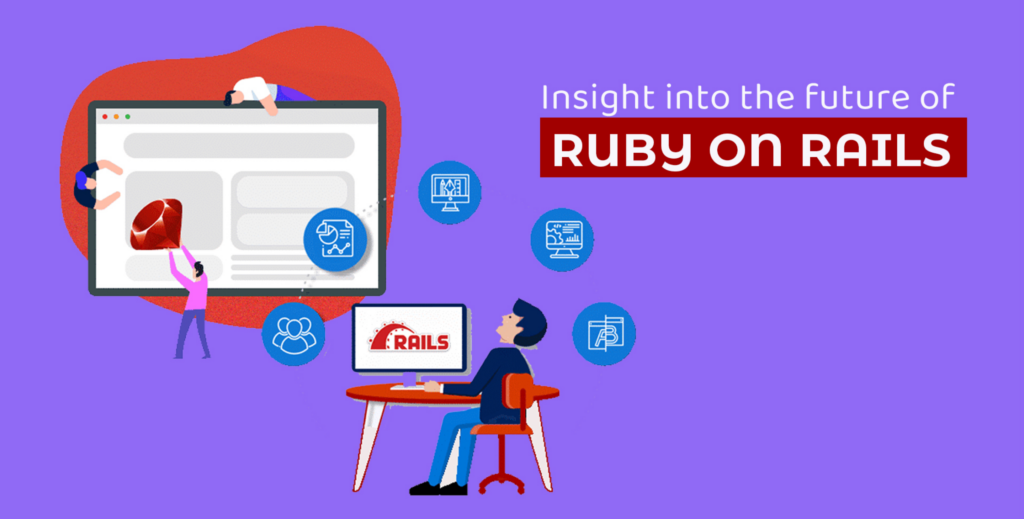The Evolution and Lasting Impact of Ruby on Rails

Ruby on Rails (RoR), often just called Rails, has profoundly shaped the landscape of web development since its introduction in 2005. Developed by David Heinemeier Hansson, Ruby on Rails emerged as an innovative framework, simplifying the process of building dynamic websites and web applications. It aimed to make the development process faster, more intuitive, and accessible for developers of all levels. Today, over 15 years after its debut, Ruby on Rails continues to hold a vital place in the tech industry. Its evolution has led to lasting impacts that have helped shape modern web development and influenced countless developers. In this article, we will exploreThe Evolution and Lasting Impact of Ruby on Rails, its key features, and the lasting impact it has had on the web development industry. Whether you’re a newcomer or a seasoned developer, understanding Rails’ significance can provide valuable insight into how far web development has come and where it’s headed.
The Early Days

In 2004, David Heinemeier Hansson extracted Ruby on Rails from his work on the Basecamp project at 37signals, now Basecamp. The goal was to create a framework that could speed up the development of web applications, and Rails delivered this promise by leveraging the Ruby programming language’s clean, concise syntax. Rails was designed to prioritize developer happiness by eliminating unnecessary complexity.
When Ruby on Rails was first released, its core principle was the “Convention over Configuration” (CoC) philosophy. This meant that developers didn’t need to worry about making every decision regarding the configuration of their code. Instead, Rails made assumptions about what developers wanted to do and provided defaults that simplified their work. The other critical principle was “Don’t Repeat Yourself” (DRY), which encouraged developers to reuse code and reduce redundancy.
Key Features That Set Ruby on Rails Apart

Ruby on Rails introduced several innovative features that distinguished it from other frameworks of its time. Some of these features became game-changers for developers and are still crucial to Rails’ success today.
- Convention Over Configuration (CoC) By enforcing sensible conventions. Rails allowed developers to focus on building features instead of wasting time configuring their environment. This principle meant that developers could get started quickly without worrying about every little configuration detail.
- ActiveRecord ORM (Object-Relational Mapping) ActiveRecord allowed developers to work seamlessly with databases using an object-oriented paradigm, making database interactions much simpler. With ActiveRecord, developers could interact with their database tables as Ruby objects, simplifying queries, updates, and other database operations.
- Scaffolding Rails introduced scaffolding, which automatically generated code for basic CRUD (Create, Read, Update, Delete) operations. This made it easier for developers to quickly create functional apps without having to write boilerplate code.
- RESTful Routing Rails embraced the principles of REST (Representational State Transfer), which allowed developers to build web applications with clear, standardized routes for resources. This made APIs and web apps easier to scale and maintain.
- Integrated Testing Rails was one of the first frameworks to make testing a core part of the development process. It integrated testing into the framework, making it easy to test models, controllers, and views.
- Rich Ecosystem of Gems Ruby on Rails introduced an extensive ecosystem of reusable components, known as gems, which sped up development. Whether it’s authentication, file uploading, or payment gateways, there’s likely a gem for that.
2005-2010: The Growth and Adoption of Ruby on Rails
Ruby on Rails didn’t just revolutionize how developers wrote code; it also disrupted how development was managed and delivered. In the early years, RoR gained significant traction due to its speed and developer-friendly features. Startups and smaller companies embraced Rails as it allowed them to launch products faster and iterate quickly.
The framework became a game-changer for rapid development, with notable early adopters such as Twitter, Shopify, and GitHub. These companies demonstrated how Rails could scale with demand while maintaining a rapid pace of development. The simplicity and agility that Rails offered were instrumental in helping these companies succeed during their formative years.
The Impact of Ruby on Rails on Startups and Web Applications

Ruby on Rails has been a game-changer for the startup ecosystem. It enabled companies to launch products quickly, iterate based on user feedback, and scale their applications efficiently. This rapid development cycle allowed startups to compete with larger, more established companies.
Startups like Airbnb, Groupon, and Twitch all relied on Ruby on Rails in their early days. The framework’s ease of use and speed made it the perfect choice for startups with limited resources but high ambitions. The Rails community also provided a wealth of resources, ensuring that new companies had the support they needed to succeed.
The Continuing Influence of Ruby on Rails on Web Development: The Evolution and Lasting Impact of Ruby on Rails
Even as newer technologies like React and Node.js have become more popular, Ruby on Rails remains an important framework. It has influenced many modern web development practices, particularly the use of RESTful APIs. These standardized routes for resources became the foundation for many modern web applications and services.
Rails also set the stage for the widespread adoption of conventions in web frameworks. The ideas of “Convention over Configuration” and “Don’t Repeat Yourself” have been integrated into numerous other frameworks, both for web development and beyond.
Why Ruby on Rails Remains Relevant Today: The Evolution and Lasting Impact of Ruby on Rails
Despite the rise of new tools and technologies, Ruby on Rails remains relevant. It is still a preferred choice for businesses looking to build robust web applications quickly. Rails has continued to evolve, embracing new technologies like Webpacker for JavaScript and ActionCable for WebSockets.
Rails’ emphasis on simplicity, readability, and developer happiness makes it a standout choice for developers. The vibrant Rails community ensures that the framework stays up to date with the latest trends and technologies, further cementing its place in modern development.
Conclusion: Ruby on Rails’ Lasting Legacy
Ruby on Rails has left an undeniable mark on the world of web development. From its introduction in 2005 to today, it has shaped how developers build, scale, and maintain web applications. The framework’s core philosophies—Convention over Configuration (CoC) and Don’t Repeat Yourself (DRY)—have influenced not only Rails but also many other programming languages and frameworks. These principles continue to guide modern web development, proving their lasting relevance.
One of Rails’ greatest contributions has been its ability to accelerate development and simplify complex coding structures. Startups and enterprises alike have leveraged its efficiency to launch products faster and iterate more effectively. Companies like Shopify, GitHub, Airbnb, and Twitch owe part of their early success to the rapid development capabilities of Ruby on Rails. This framework has enabled countless businesses to scale efficiently, allowing them to focus on innovation rather than backend complexities.
Even as newer technologies such as React, Vue.js, and serverless architectures gain popularity, Rails remains a relevant choice for web applications. Its strong community support, frequent updates, and compatibility with modern web development trends ensure that it doesn’t fall behind. With enhancements like Webpacker for JavaScript integration and ActionCable for real-time web functionalities, Rails continues to evolve alongside industry advancements.
Looking ahead, the future of Ruby on Rails remains promising. While newer frameworks will always emerge, Rails’ fundamental impact will not fade. Businesses that prioritize rapid development, maintainability, and scalability will continue to find Rails an attractive choice. Its influence on modern web development ensures that even if technologies evolve, the principles Rails introduced will remain central to how applications are built.
For developers, mastering Ruby on Rails offers a solid foundation in web development principles that extend far beyond the framework itself. Whether building a startup, or working on enterprise solutions, or contributing to open-source projects, understanding Rails’ capabilities can open doors to numerous opportunities. Its legacy is not just in the code it has inspired but in the mindset it.
